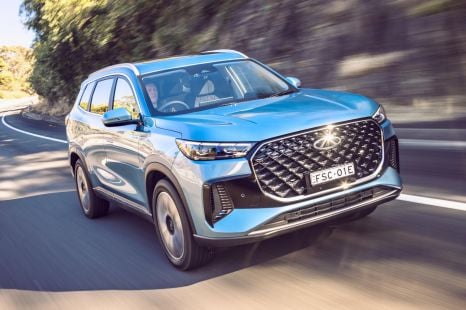

Max Davies
4 Days Ago
Almost as fast as a Lamborghini Urus for a hell of lot less coin. The Trackhawk is the sort of car no one needs, but we all desperately want.
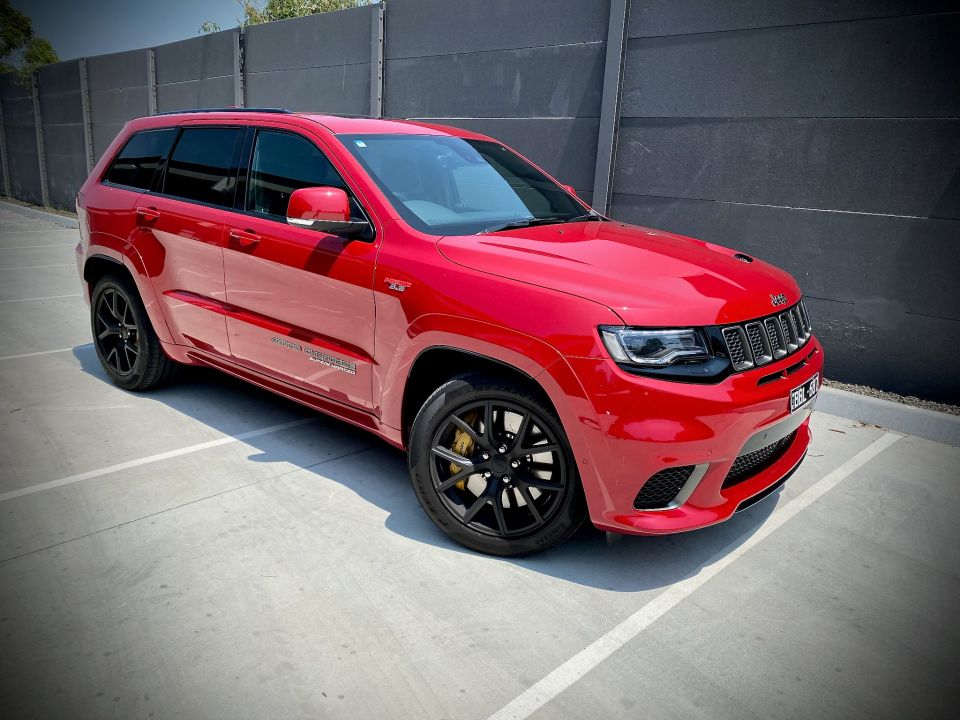


Publisher
New from
$47,500
excl. on-roads

Publisher
New from
$47,500
excl. on-roads


Publisher
New from
$47,500
excl. on-roads

Publisher
New from
$47,500
excl. on-roads
Quickly see how this car stacks up against its competition. Select any benchmark to see more details.
CarExpert helps new car buyers save thousands with expert reviews, honest advice, and transparent pricing – no dealer pressure and no sales games.
The price of petrol is at historic lows, and there has never been a better time to burn fossil fuel. That’s how you have to think if you have an ounce of desire to own the Jeep Grand Cherokee Trackhawk.
This is one of the most outrageous SUVs on the planet, and likely to be a one of a kind in the age of environmentalism.
It has a drinking problem but we can forgive the loud American for that, because what it sucks out of the depths of the earth is turned into one of the most amazing driving experiences you can have in an SUV.


I distinctively remember Anthony and I driving this through the outer regions of New York at insane speeds, trying our best not to get noticed by the NYPD.
I’m not sure there has been another time where we’ve both had so much laughter and joy brought on by an SUV. It’s a car that you can’t stop smiling in.
It’s everything a typical family SUV isn’t: fun, fast, loud, and outrageously exciting.
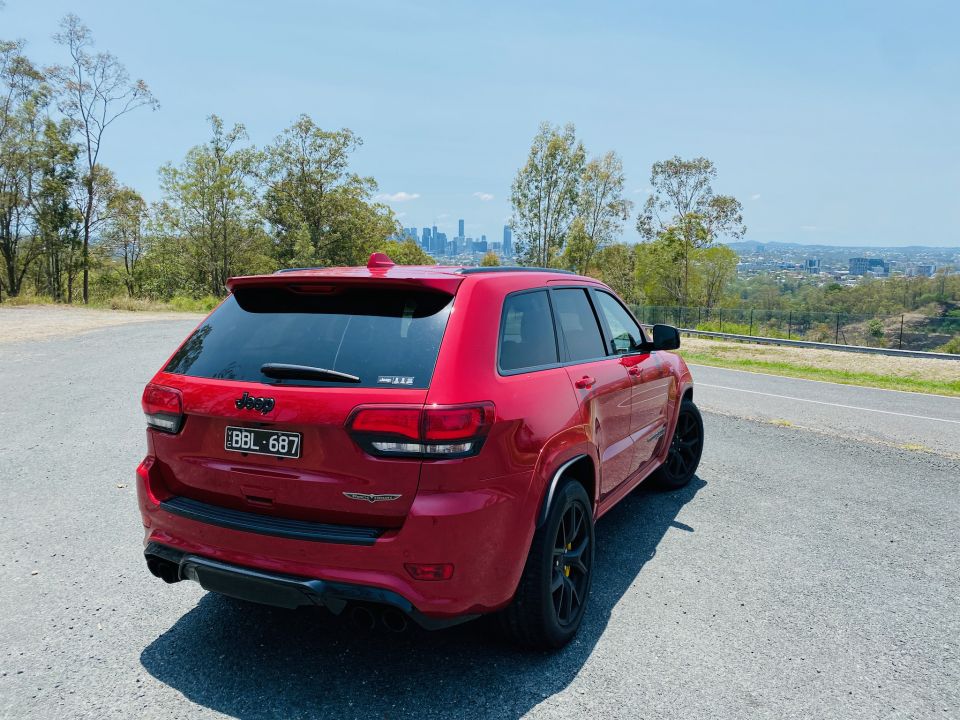
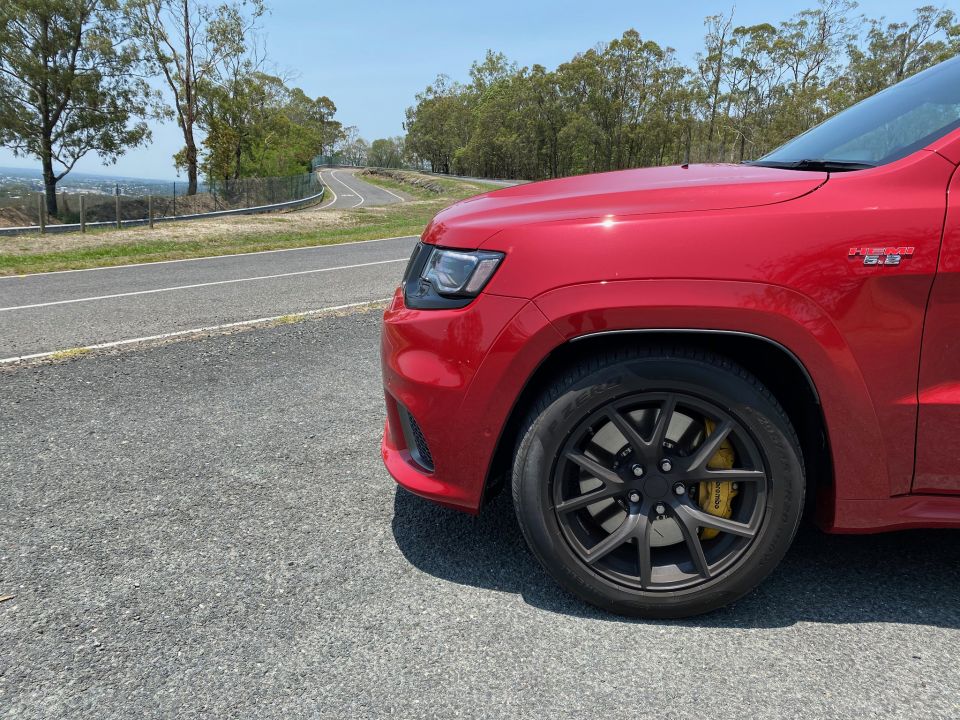
Having spent about two weeks with the Trackhawk in sunny Brisbane recently, my feelings for the Trackhawk have not changed. It’s still spectacularly exhilarating.
When you consider the 0-100km/h time of the Grand Cherokee Trackhawk is 3.7 seconds, it should give you an idea of what it’s like to experience this SUV. This is only 0.1 of a second slower than the Urus for the 100km/h dash.
Driving one of these discreetly is actually quite easy. The Trackhawk has very few telltale signs differentiating it from the regular SRT.
Frankly, the SRT and the Trackhawk are completely different cars in many ways – price and performance, for starters – but to the average person they do tend to look similar.
For some people that’s a good thing, because discretion is important. However, there is pent-up anger in the Trackhawk. It’s not meant to be under the radar.
This is a car only for those brave enough to tame it. Get behind the wheel, press the buttons to turn this into what’s essentially a high-performance car, and it feels about as subtle as Shaquille O’Neal at a One Nation dinner party. It begs for attention.
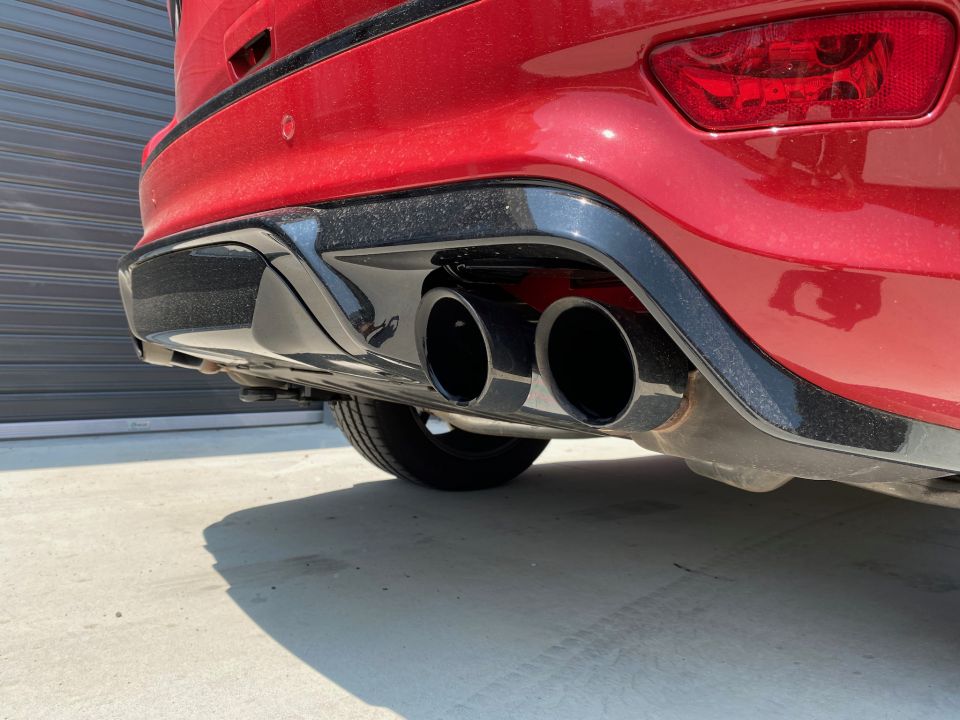
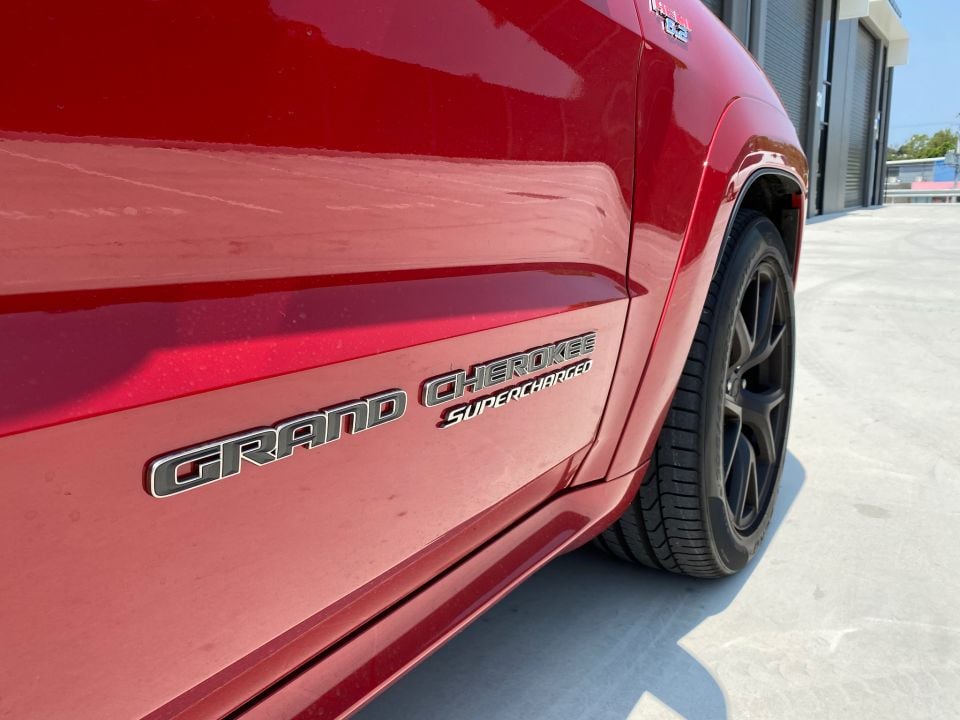
The minute you start to get the Hellcat engine warmed up you’ll struggle to not get a little loose with the right foot. Get the supercharger screaming and whining and the noise combined with the ballistic soundtrack coming out of the exhaust behind you becomes so damn intoxicating you start to think you’re driving a supercar… in some ways you are.
That’s really what this car feels like. It feels like supercar performance in SUV form. Ironically, it actually uses more fuel than most supercars we’ve ever experienced, which is so ridiculous it’s actually worth mentioning.
No one buys a Trackhawk because they need it, but tell you what, you will want it after just one spirited drive.
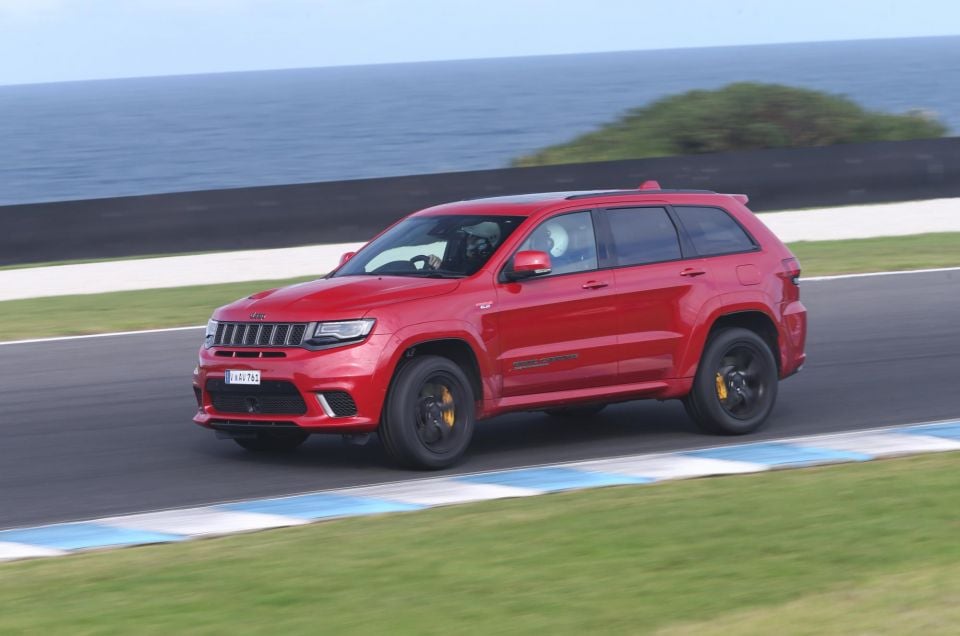
The Trackhawk will set you back around $134,900 before on road costs, which makes it a rather expensive Jeep. But you have to consider what it is you’re getting and what makes it to so special.
There’s a roughly $45,000 price difference between a new Trackhawk and a new SRT and, although both cars have a V8, you’re paying extra for a hell of lot more gear.
It may cost $134,900 before on-road costs, but it competes with the likes of the $400,000 Lamborghini Urus when it comes to performance.
In reality it’ll be cross-shopped with the BMW X5 M, Mercedes-AMG GLE 63 S, Audi RS Q8, and Jaguar F-Pace SVR.
A monster. That’s what you find when you open the bonnet, an American monster cooked up in one of those muscle car TV shows you see late at night. Except this one offers the reliability and consideration of a well-engineered V8.
At the heart of the Trackhawk is a supercharged 6.2-litre V8 engine pumping out a supercar-beating 527kW of power and 874Nm of torque. The engine has a cast-iron block featuring water jackets between the cylinders for cooling.

Let’s get a bit technical here, because the Trackhawk is all about the engine. For a start there are high-strength, forged-alloy pistons set up on powder-forged connecting rods with high load-capacity bushings and carbon-coated piston pins.
There’s a forged steel crankshaft with induction-hardened bearing surfaces capable of withstanding 1600psi of firing pressures. That’s like having five average-sized sedans standing on each piston every two revolutions.
Meanwhile, Jeep says it burst-tested the crankshaft damper to 13,000 rpm.
Add to that sodium-cooled exhaust valves with special steel-alloy heads that stand up to temperatures as high as 900 degrees, and the picture may start getting a little clearer about why the Trackhawk costs what it costs.
The main party trick, though, is the 2380cc per revolution supercharger, which is sealed for life with synthetic oil and can handle a maximum of 11.6psi. It has a drive ratio of 2.36:1 with a 14,600rpm limit.
Those paying attention will have noticed the supercharger breathes through what was once a driver’s-side fog lamp. It now helps feed a 92mm throttle body.
There’s also a cooling system designed to maintain intake air temperatures below 60 degrees, even under the most extreme conditions. It can do so while delivering up to 500L/second.
As we mentioned, the Trackhawk is really, really, thirsty. Making that much power and torque from a supercharged engine doesn’t come without some serious fuel usage and in order to feed the monster the Trackhawk makes do with two high-flow, multi-mode fuel pumps.

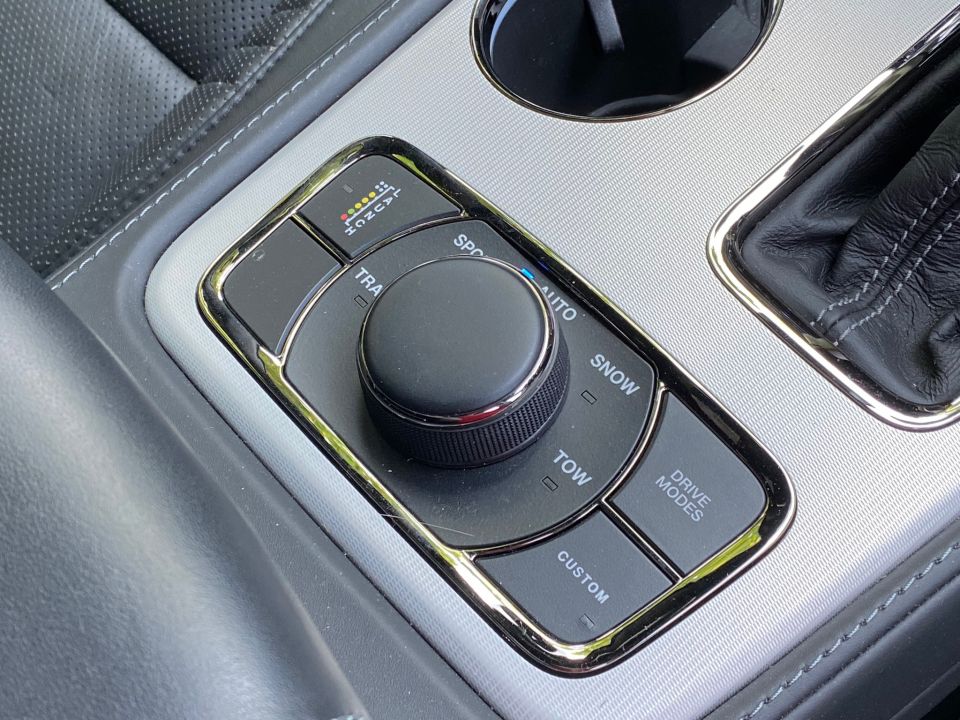
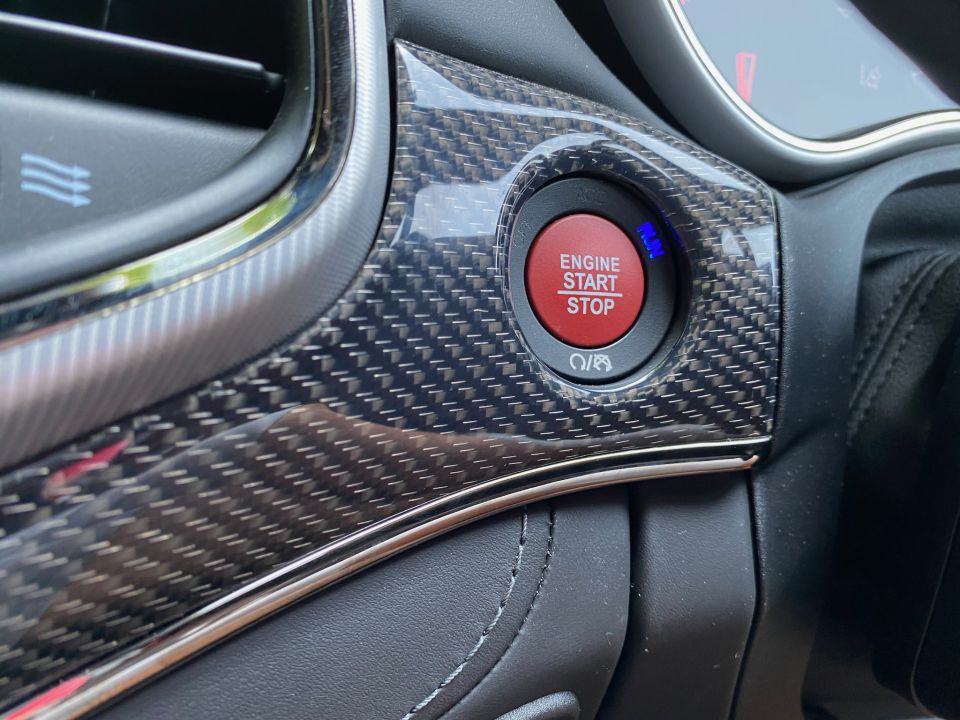
This is not an engine to be taken lightly, which is why Jeep has also included a valet mode that will limit the revs to just 4,000rpm and upshifts much quicker than usual, meaning your car won’t become a scene from Ferris Bueller’s Day Off.
Pretty much everything that has anything to do with performance. Apart from the engine, this includes Brembo-supplied 400mm two-piece ventilated rotors with six-piston calipers up front, and 350mm vented rotors with four-piston calipers in the rear.
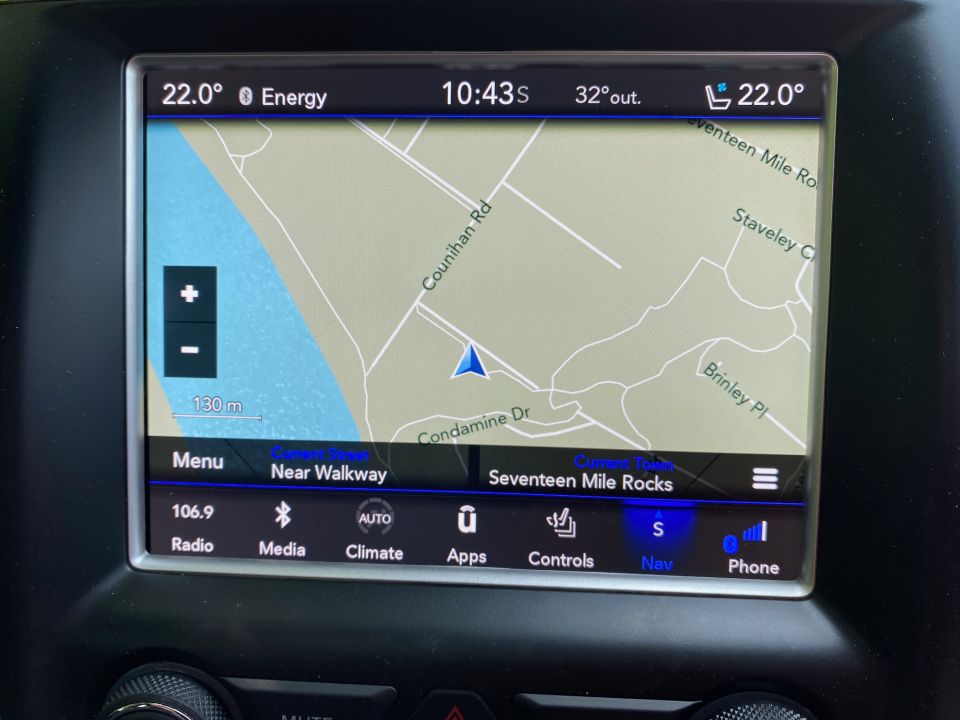


There’s a lot of gloss black, from the headlights to the rear bumper valance that houses the quad chrome exhaust tips. The front fascia is home to larger air dams for superior cooling, which complements the unique bonnet and its vents.
You don’t have to look too hard to the see the aggressive flared wheel arches and a few subtle Trackhawk badges, either.
The standard 20-inch wheels really should have given way to the optional lightweight forged aluminium wheels of the same size, each of which saves 5.5kg.

The interior is blessed with a lot of carbon fibre, which is unique to the Trackhawk. Also unique is the three-spoke, flat-bottomed steering wheel and the Nappa leather and suede seats with an embroidered Trackhawk logo.
Of course, somewhere in there is also a Grand Cherokee which is a decent family SUV – but if that’s your consideration, buy a regular one and you could almost afford to buy an Alfa Romeo 4C with the change left over.

We feel the Trackhawk could have offered more in the way of differentiation from other Grand Cherokee models, but everything has a cost. Ultimately what you really get for the money is the privilege of having a ridiculous Hellcat engine under the bonnet.
The short answer is yes. There are plenty of active safety systems on the Grand Cherokee range.
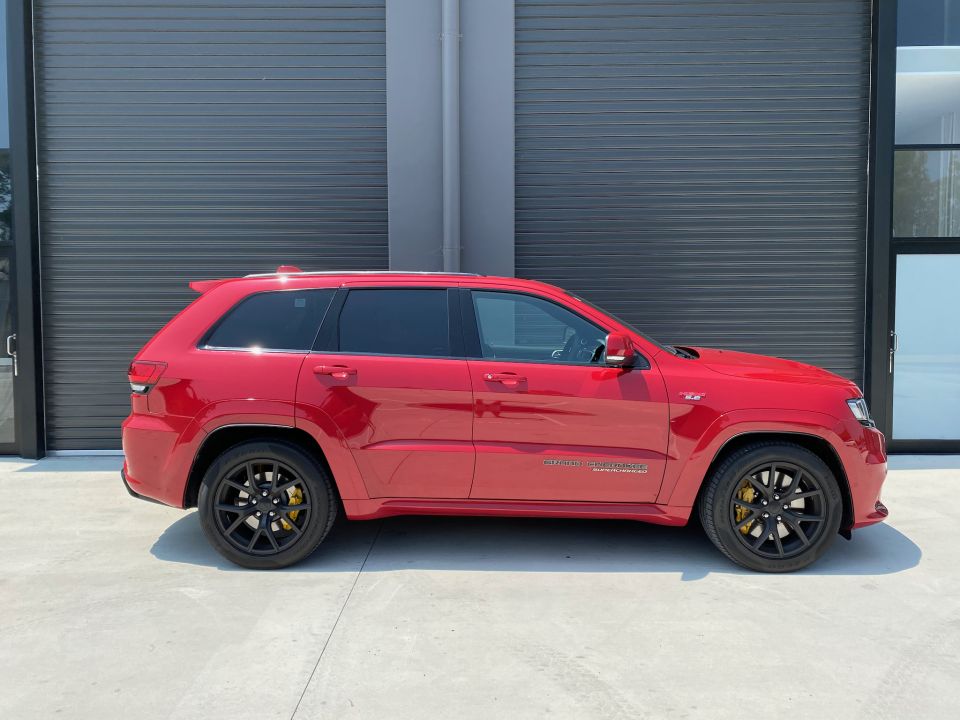
These include blind-spot monitoring and rear cross-traffic alert, parking assistance systems, adaptive cruise, autonomous emergency braking, lane-departure warning, and lane-keeping assist. There are seven airbags, too.
The safety rating of the vehicle is five stars, tested by ANCAP in 2013, and the car hasn’t been retested since – and certainly never in Trackhawk guise, which has a significantly larger engine up front.
It’s unlikely the Trackhawk would get a five-star safety rating system on today’s testing regime, not necessarily because of its construction, but due to technicalities such as the need for pedestrian and cyclist detection on its collision warning systems.
Not particularly different to any other Grand Cherokee. Yes, there are unique seats, a new steering wheel, and new screen configurations for the 8.4-inch infotainment system, but it’s really not all that different to a regular version.
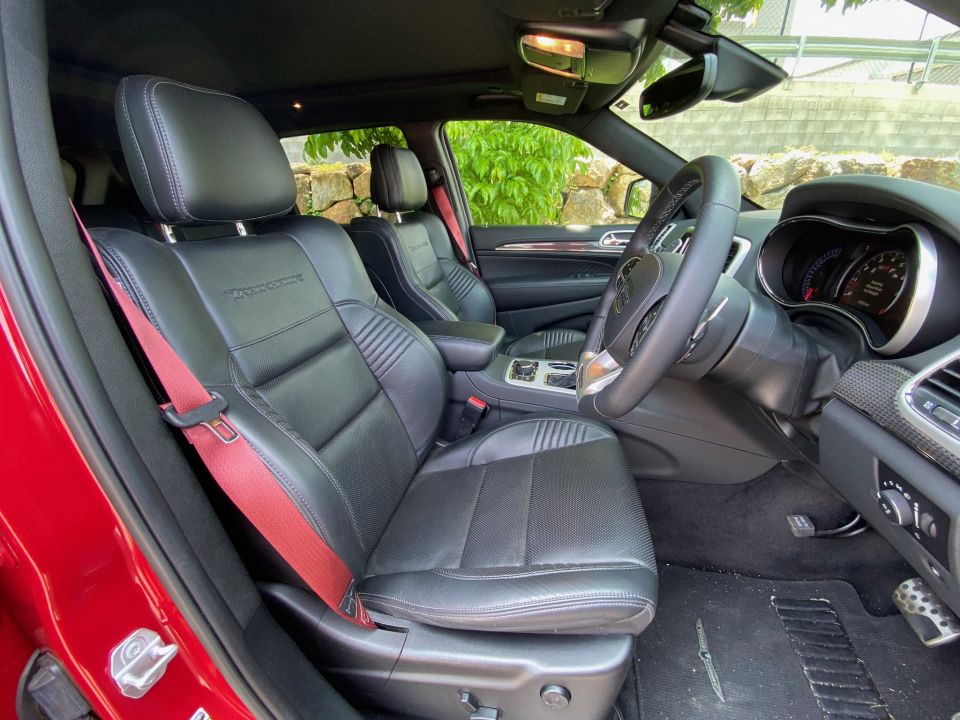

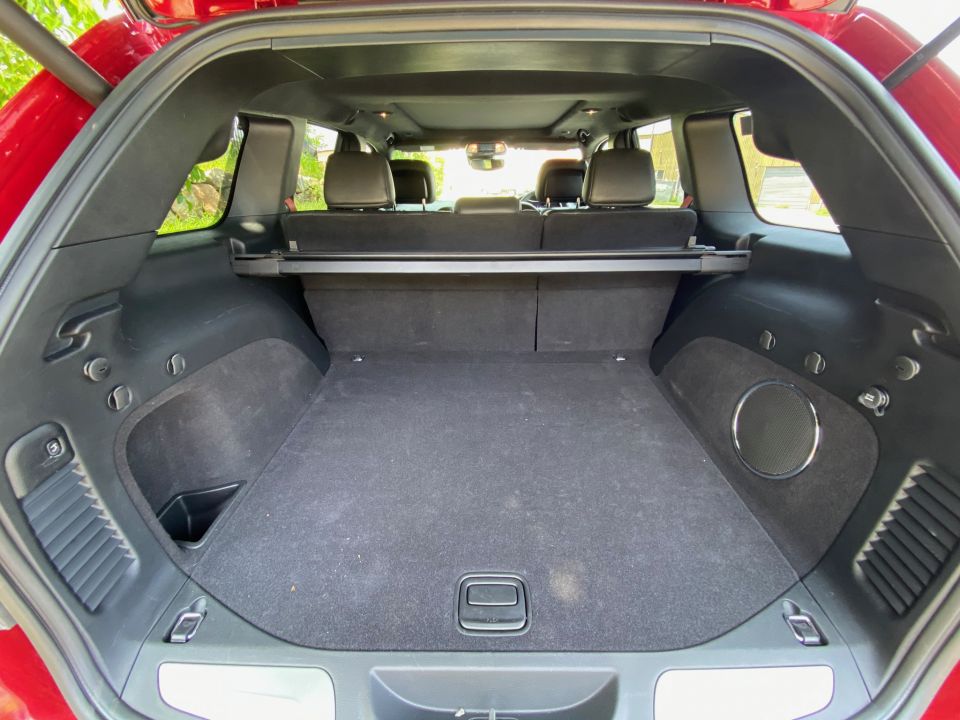
We did like the 7.0-inch driver information display instrument cluster with the tachometer in the middle.
The likeness to the regular Grand Cherokee is a good thing, because that means a whole heap of room inside. It’s a very spacious car that can easily accommodate five people and their luggage.
The general cabin ambience is starting to show its age but even so, the Trackhawk gets special features such as active noise cancellation, and a leather stitched instrument panel, doors, centre console, and armrest.
There are also unique Trackhawk-badged floor mats.
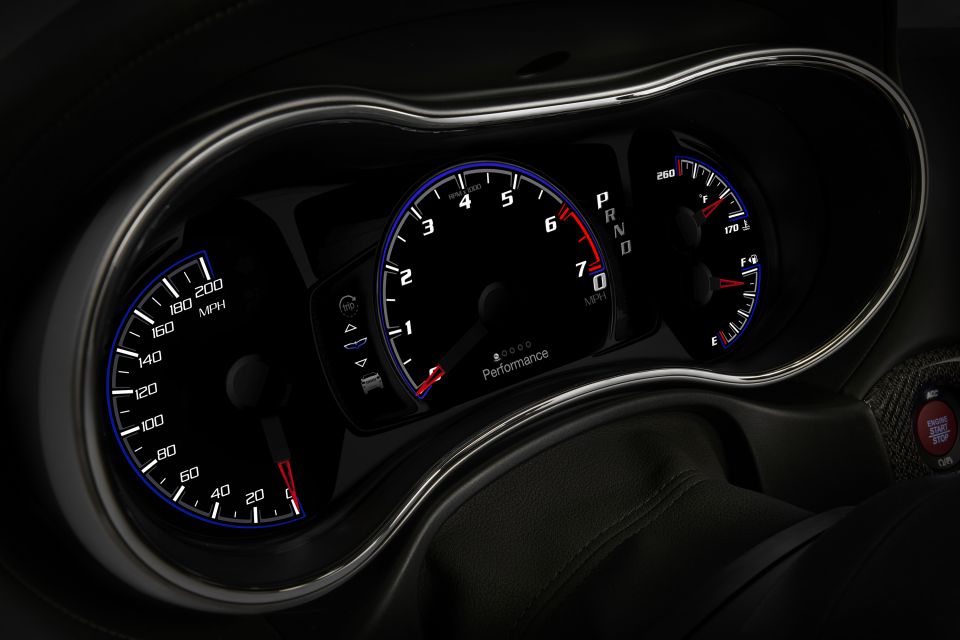
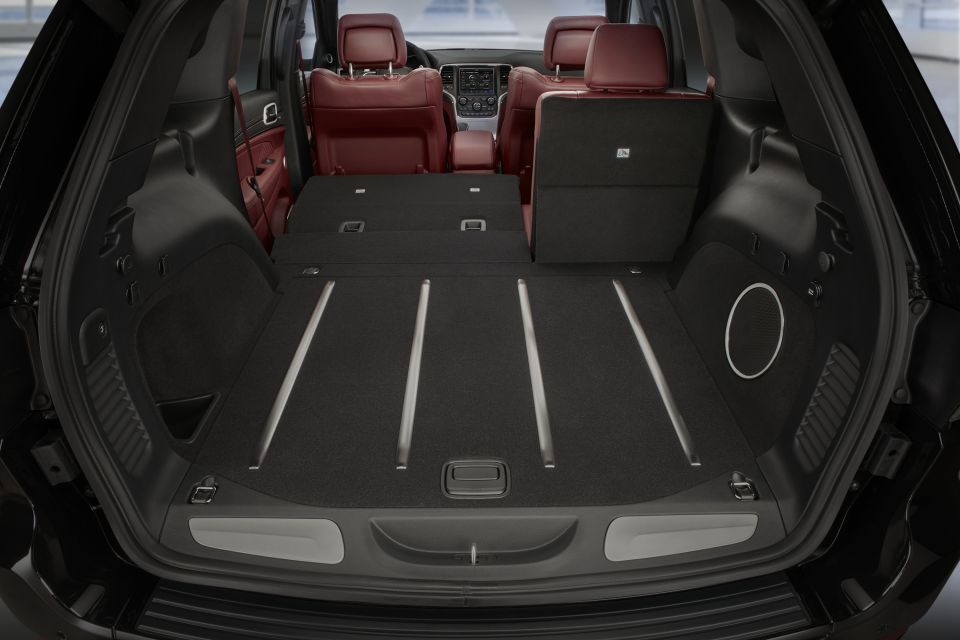
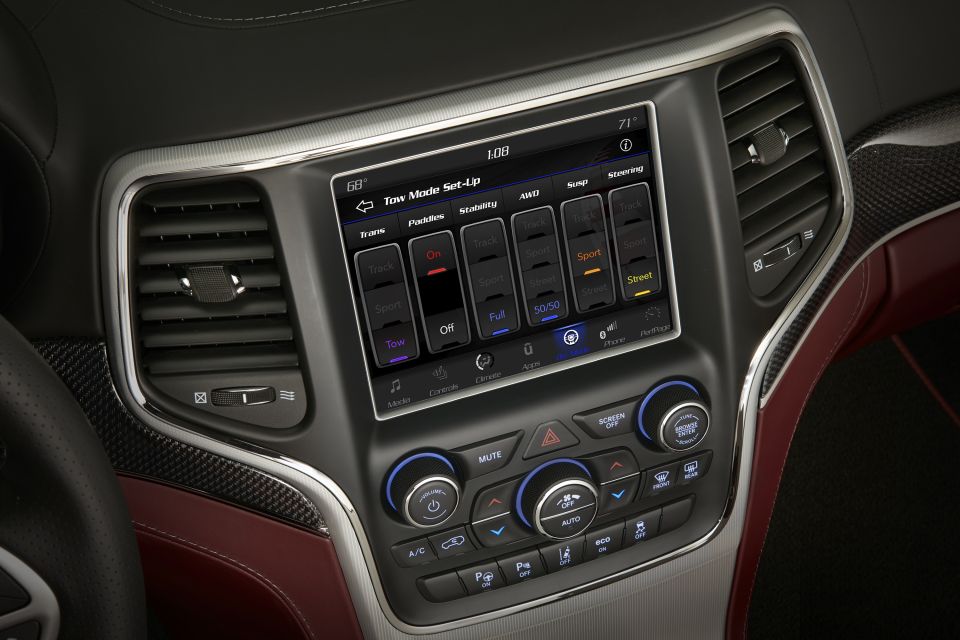
There’s also an 825W Harman/Kardon sounds system that we assume is nice, but we only sampled it briefly so as to not undermine the spectacular V8 soundtrack. The sound quality is top-notch for when you’re out of fuel on the side of the road waiting for help to arrive.
We found the boot generous for things like prams, but the button to close it is unusually placed on the inside of the boot rather than on the tailgate, which made it a little annoying.
With 782L of space, growing to 1554L when the 60/40 second row is folded flat, you won’t be caught short on a trip to Ikea.
Surprisingly well. Considering it has a gross vehicle mass of 2993kg, the Trackhawk drives with enough surety the ‘track’ in Trackhawk doesn’t seem all that ridiculous. You could very much drive this car on a racetrack and not be embarrassed.
We would actually go out on a limb and say it’d be a faster that a great deal of normal sports cars that lack any of the Jeep’s finesse.



CarExpert helps new car buyers save thousands with expert reviews, honest advice, and transparent pricing – no dealer pressure and no sales games.
There is no arguing how fast this car is in a straight line: 3.7 seconds to 100km/h is one thing, but being able to do a standing quarter mile in 11.6 seconds with a top speed of 290km/h really emphasises the rapid nature of the Trackhawk.
What’s surprising is how well it handles. Frankly, we’re talking about a Jeep here, not a Mercedes-AMG or BMW M car. It also rides rather well. Firm but not uncomfortable. You can definitely drive it daily.
Punt the Trackhawk hard on some twisty mountainous roads and you’ll be shocked by how flat it sits, and how easily it corners.
We could ask for more steering feedback, and those Pirelli Scorpion all-season tyres are made for grip as much in the dry as they are in the wet, which takes away what might be an even more confidence-inspiring drive.

It has some annoying features, such as the foot park brake, which is ancient and really takes away from the sporty nature of the Trackhawk.
You will also genuinely use about 25L/100km of premium 98 RON fuel just driving around town. During my time with the Trackhawk I actually got pulled over by the friendly folks at Queensland Police for a random check and I had the fuel economy on the screen, to which the nice policeman said “I can tell you’ve been speeding by your fuel economy”.
Try explaining to a police officer that has heard every excuse under the sun why that economy figure is actually low! I’m pretty sure I even said “Officer, when I was speeding it was close to 35L/100km, this is nothing” which was immediately followed by… “I mean, if I was speeding, I think that’s what it would do…”

To give you an idea of how annoying the fuel economy consumption became after the first two tanks of fuel in less than a week, at one stage I actually parked the Trackhawk for 48 hours and started driving my Performante… to save fuel.
Apart from fuel consumption, the Trackhawk falls under the same servicing schedule as every other Jeep.

Maintenance is a very reasonable $399 every 12 months or 12,000km for the first five years. Add to that the five-year, 100,000km warranty and there is a fair bit of reassurance that comes with being an owner.
Would we buy one? Yes but… we would really like a more modern interior and a corporate fuel card to come with it. What we love about the Trackhawk is that it’s a hoon. It really is. It’s every car enthusiast’s ideal family SUV. It’s much faster than the similarly-priced Jaguar F-Pace SVR and sounds a whole lot better.
Nonetheless, there is no way you can buy one of these and have all 12 points on your licence after 12 months. It’s impossible.
On the environmental side, with 385g of CO2 per kilometre (a new non-hybrid Toyota Corolla is 97g), you’ll have to plant a lot of trees to offset your personal emissions. If you care.
CarExpert helps new car buyers save thousands with expert reviews, honest advice, and transparent pricing – no dealer pressure and no sales games.
Alborz is the founder of CarAdvice (sold to Nine and now Drive) and co-founder of CarExpert. He is an honourary adjunct professor & entrepreneur in residence at the University of QLD. He loves naturally-aspirated V8s, V10s and V12s and is in denial about the impending death of the internal combustion engine. The best way to reach him is via Instagram.


Max Davies
4 Days Ago
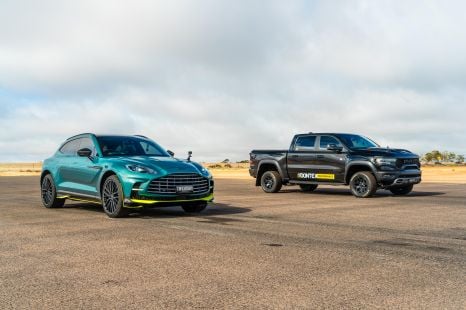

Paul Maric
4 Days Ago
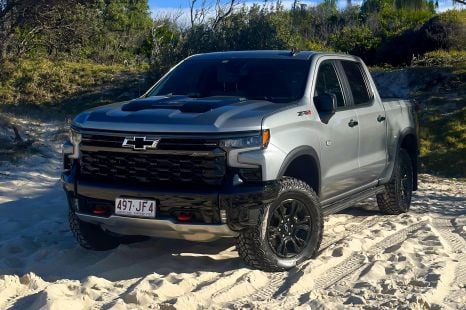

William Stopford
4 Days Ago


William Stopford
3 Days Ago
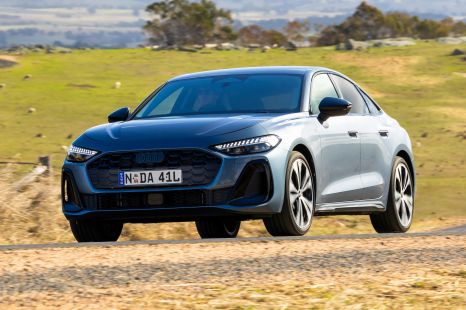

James Wong
2 Days Ago
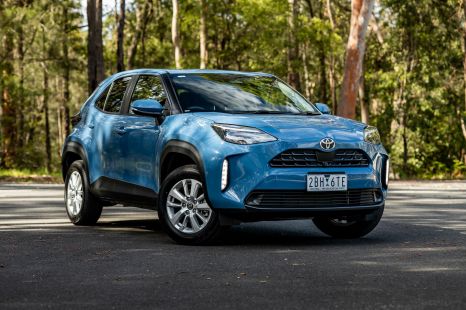

Matt Campbell
16 Hours Ago